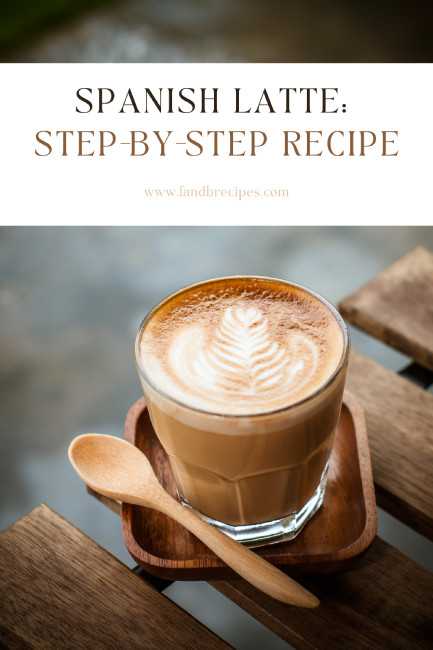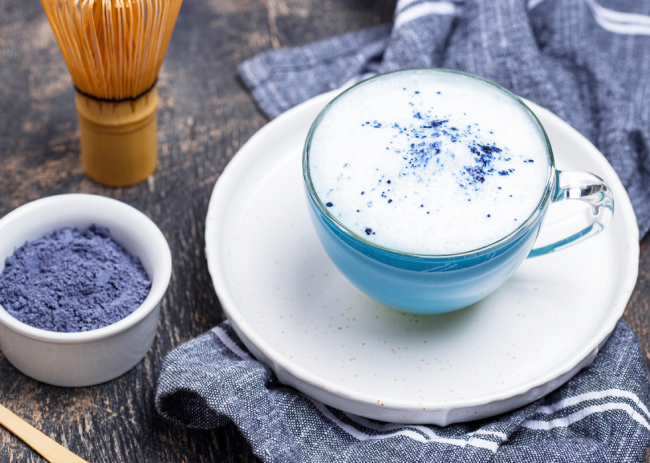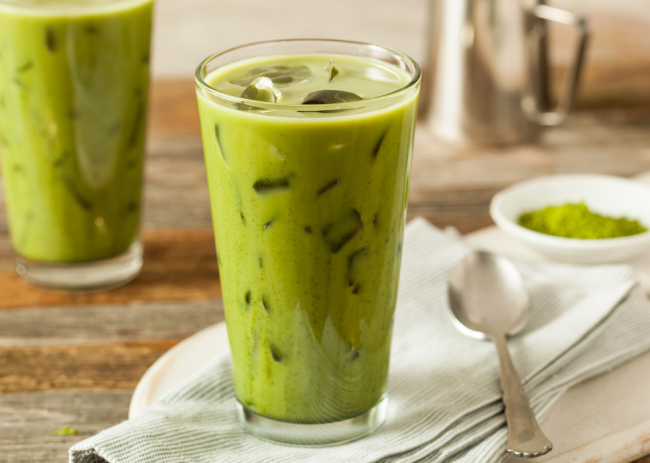Spanish Latte: Step-By-Step Recipe
If you are a caffeine addict or a latte lover, you might be familiar with Spanish Latte.
This classic latte is an absolute favourite to Spaniards and Latin Americans. This hot beverage is one of the several kinds of lattes around the world.
As a matter of fact, this espresso-based drink has several variations. These variations differ from the traditional, owing to different methods of preparation around the world.
However, the traditional latte form of this latte is called Cafè Con Leche. It is different from what is propagated around the world. To enjoy the authentic taste of it, you should be aware of what the traditional version is. However, the internet is booming with recipes far from authentic ones.
All in all, this latte is a Spanish breakfast delight.
Due to its distinct smell and strong flavour, this latte has acquired quite a lot of attention over the years.
When in the mood for a Spanish-style breakfast, you can enjoy the combination of some tortillas with this latte and orange juice.
What is Spanish Latte?
Steamed milk, espresso and a sweetener of choice are what make the traditional form of this latte. When in Spain, you should avoid using the term “Spanish Latte” since they would not understand it.
We refer to it as Cafè Con Leche in Spanish which translates to coffee with milk. The original form differs from the variations in containing lesser milk. Outside Spain, the Spanish Latte is a sweetened version made of condensed milk with an added topping of flavoured syrup.
The internet has a number of recipes, which suggest the use of scalded milk. As a matter of fact, this is not how Spaniards prepare it. You can use regular steamed milk to prepare it.
Vietnamese coffee is compared with this latte for its taste which is far from true. Vietnamese coffee is not espresso-based and Robusta coffee beans are used to make it. On the other hand, the Spanish latte is originally made of Arabica beans.
Adding to this, it is important to note that Cafè Con Leche is an umbrella term in Spain since it means ‘coffee with milk.’ So, if you ever visit Latin America, you might get a chance to drink a variation of what the Spanish serve as their authentic latte.
Owing to its strong aroma and sweetness of milk and sugar, Spanish Latte makes the list of the three staple coffee options in Spain. The other two are Espresso Coffee and Cortado (espresso with milk).
The Benefits Of Spanish Latte
The obvious use of coffee and espresso make this latte good for memory and brain functioning. Caffeine is considered one of the happy foods, which can instantly uplift your mood. This latte has milk, which you can choose as you prefer.
You can use healthier milk alternatives in case you’re allergic. Adding to this, the use of condensed milk makes it a good source of potassium, Vitamin A, D and B12. On the other hand, condensed milk has a high amount of saturated fat. In effect, you should be careful in its consumption to avoid any heart diseases.
Nutritional motives are not really considered when making this latte, but you can easily create a healthier version for yourself. For instance, you can replace the usage of white sugar with brown. Brown sugar has a higher amount of Iron, Potassium and Calcium. However, the presence of these minerals is negligible. On the other hand, this could uplift the nutritive value of your latte.
Since there is no specification regarding a particular kind of milk, using soya milk or almond milk while preparing this latte could make it healthier. All in all, it depends on your preferences and taste but the traditional Spanish latte does have a considerable amount of fat and sugar. As a matter of fact, this latte is quite versatile. You can create your own version which suits your health motives.
Best Beans To Make Spanish Latte
As it is, arabica coffee beans are the best and most preferred kind of coffee beans to make this latte. They should ideally be freshly roasted to retain the originality of the latte. On the other hand, if you fail to find these or don’t like their flavour, there are other beans which can be used.
- A Blend of Arabica and Robusta Coffee Beans: If you ever wish to increase the caffeine concentration in your latte, a blend of these two kinds of coffee beans will be a good option. The average price of Arabica coffee beans is $4.28 per kg while Robusta costs $1.59 per kg.
- Solely using Robusta Coffee Beans for Spanish Latte: You can’t ignore the fact that Robusta is usually used for Vietnamese coffee. It is rare to use it in the preparation of a Spanish latte. On the contrary, if you enjoy the rubbery texture of Robusta beans, you are most welcome to use it for your Spanish latte. Please note, that if you do so, your latte will be different from the authentic.
In order to make a coffee with the exotic Spanish essence, you can buy your coffee beans from some sites selling exclusive Spanish coffee beans. Coffee beans play an important part in the overall taste of the latte.
In effect, choose your beans wisely enough to retain the original flavour of the Spanish latte. On the other hand, since this latte has many loved variations around the world, you are free to experiment and create your own signature version of it.
Spanish Latte Ingredients
A Spanish latte does not require a long list of ingredients since it is a simple and easy beverage. The taste varies mostly due to the seasoning you choose for it. To enjoy the maximum flavour and fresh aroma, opt for freshly roasted Arabica coffee beans. The coffee beans are what will elevate your latte in its essence.
The ingredients to prepare this delectable beverage are easily available in most supermarkets. You can also research the best coffee bean shops near you.
To make your soul-satisfying cup of Spanish latte, you’ll need:
- ½ Cup of Whole Espresso Beans: Buy these only if you have the equipment at home and check the ‘roasted on’ date before buying.
- 3 Teaspoons of Crushed Arabica Coffee: This is optional since you need this if you don’t have a coffee grinder or Moka Pot.
- 6 Ounces of organic Grass-fed Animal Milk: You should prefer organic grass-fed milk. On the other hand, other milk options will do. If you wish you can go for vegan options such as soy milk or oat milk.
- ½ Litre of Water: If your municipality has coarse water or salty water, do not use that. Use filtered water, instead. This is because water plays a direct role in affecting the flavour of the latte. Therefore, use water that does not have a strong taste.
- 1 to 2 Teaspoons of a Sweetener: Use brown/white sugar or stevia depending on your health preferences to sweeten the milk.
- 2 Teaspoons of Sweetened and Condensed milk: This would depend on how much of a sweet tooth you have. On average, 1-2 tsp of condensed milk is enough.
- Just a Pinch of a Seasoning of your choice: I would suggest crushed cardamom as it will add to the olfactory delight. However, adding seasoning is optional.
Tools Required To Make Spanish Latte
Any fancy tools are not required for this recipe. Although, if you are a coffee lover, you ought to have a Moka Pot or an Espresso Machine at your house. You need the same tools to make this latte as you need for any coffee recipe. Here is a list of the tools you require for Spanish Latte.
- An Espresso Machine: I suggest a machine which yields strong coffee. Such as, AeroPress or Moka Pot. There are different types of coffee makers available in the market. Analogous to this, an espresso machine would be ideal.
- A Pot or steaming wand
- A thermometer: This is optional but will come in handy in checking the temperature.
- Small mug: You need it to pour your latte in.
These are all the tools you need to make the latte. Except for an Espresso machine, none of the tools would be heavy on your pocket. You can proceed on to make the perfect mug of latte with the mentioned tools.
Spanish Latte Recipe
Since you are aware of all the tools and necessary ingredients we can proceed with making the latte.
Adding to it, it is important to know how to serve this latte. A notable point is that, unlike other lattes, you can serve this latte, hot or cold.
In the traditional way, Spaniards serve it in a cup with a size range of 125ml volume up to 200ml. This size differs based on the region in Spain where it is served.
The size increases outside Spain since more milk is added to it in other countries. Please note that this version is the one in which we use condensed milk. This makes it slightly different from the traditional Spanish latte.
Step 1
Take up a drinking cup or mug and add condensed milk to it.
Step 2
Take up a small pot and heat the milk in it. Heat it up to 60 to 65°C. You can use a thermometer to measure the temperature and avoid overheating the milk. The most important thing to note here is that you are not supposed to let your hot milk boil. You have to heat it by using your steaming wand. That too, alternatively. Another point is that you are supposed to avoid foam. Don’t leave the steaming tip too near the surface. Otherwise, it would develop a foam like that of a cappuccino, which you do not want.
Step 3
Now is the time to pull around 1-3 espresso shots as your milk heats. You have to pull these in your drinking cup or mug. If you do not have an espresso machine use the mentioned alternatives. For instance, a Moka pot, French Press or AeroPress.You want the coffee to have a strong flavour. So, stir it up and add condensed milk.
Step 4
Since your milk has now heated up, add it to your drinking cup or mug. To stick to the traditional ratio, maintain it to be a 1:1 espresso to milk ratio. On the other hand, you can also enjoy a strong coffee flavour. To do that, use ⅓ espresso and ⅔ milk or ½ espresso and ½ milk.
Step 5
Add a pinch of your preferred seasoning over your latte and enjoy your heartwarming mug of Spanish Latte!

Spanish Latte
Equipment
- An espresso machine
- A Pot or steaming wand
- A thermometer
- A small mug
Ingredients
- ½ cup of whole espresso beans
- 3 tsp crushed arabica coffee optional
- 6 ounces of organic milk
- ½ litre of water
- 1-2 tsp sweetener
- 2 tsp condensed milk
- A pinch of preferred seasoning optional
Instructions
- Add condensed milk to a mug.
- Heat milk in a pot up to 65°C. Do not boil it up and avoid foam.
- Pull 1-3 espresso shots as the milk heats in your mug, using an espresso machine.
- Add the heated milk to your mug, maintaining a 1:1 espresso to milk ratio.
- Add a pinch of your preferred seasoning and it’s ready!
Nutritional Information
Spanish Latte per serving is 2 ounces of milk and 2 ounces of Espresso shots with sugar. The following is the nutritional information per 4-ounce of Spanish Latte:
- Net Carbs: 0g
- Fibre: 0g
- Protein: 0g
- Fats: 0g
On the contrary, the Calorie count differs on the kind of milk preferred to prepare the latte. The following is a list of per serving calorie count of Spanish Latte based on the milk used.
- Whole milk: 34 Cal
- 2% Fat Milk: 28 Cal
- Zero Fat Milk: 19 Cal
- Almond Milk: 9 Cal
- Soy Milk: 22 Cal
- Oat Milk: 28 Cal
Not limited to this, if we consider white sugar, 1 teaspoon has 15 calories. Accordingly, the number of teaspoons of sugar added to the latte will increase the calorie count.
As can be seen, milk used in the latte determines the number of calories. So, you can choose according to it and create your own low-calorie version of the latte.
As a matter of fact, it will not add to your daily calorie intake which is why you can have it as a part of a wholesome breakfast.
FAQS
What Does Spanish Latte Have?
It consists of 3 basic ingredients namely, sugar, milk and espresso. Due to the addition of sugar, it has a slightly sweeter texture than the usual lattes. It can also have condensed milk to create a creamy flavour. A lot of forms of this latte are there around the globe. Owing to this, its consistency differs. There might also be seasoning to enhance its taste and aroma. Steamed milk, arabica coffee and sugar make up this latte. Some people might prefer it made of scalded milk and robusta coffee. The latter is not what an authentic Spanish Latte is like. However, some coffee lovers might prefer a personalised version of the latte.
Why Is It Called A Spanish Latte?
As lattes from various locales namely France, Italy and Spain, Spanish Latte has its name because of its origin. As the name suggests, it refers to a typical preparation of espresso-based latte in a Spanish style. The recipe might have originated in Spain but it is now popular with its diverse styles of preparation in most nations. Places like Florida, a large part of Latin America and the Philippines are now a second home to this latte. In the Spanish language, it is known by another name but its English name makes it popular outside Spain.
What is the Difference Between Iced Latte And Spanish Latte?
The basic difference between iced latte and Spanish is its espresso to milk-ratio. 1 part of espresso to 2 parts of the milk makes a regular iced latte. On the other hand, 1 part espresso and 1 part condensed milk make a Spanish latte. It is sweeter than an iced latte. Also, an iced latte is an umbrella term which covers lattes made using different coffee beans such as robusta. Both the lattes have strong flavours. As a matter of fact, the milk to espresso-ratio sets them apart.
What Is A Spanish Latte Called?
The original name of this hot beverage is Cafè Con Leche. It translates to ‘coffee with sugar’ in English. As can be seen, this term is in the Spanish language. However, if you order the latte with this name in a Spanish-speaking country, you will receive a variation of it rather than its authentic form. Spanish Latte is moreover a simplified term used by people outside Spain. People in Spain won’t even recognize their favourite beverage by what the whole world calls it. Adding to this, ordering a Cafè Con Leche in Spain will bring to you an authentic Spanish latte.
What Is The Difference Between Spanish Latte And Cappuccino?
A cappuccino has a typical combination of steamed milk with an even distribution of espresso and foamed milk. The foam is such that it is more than that in Spanish Latte or any latte for that matter. A cappuccino has a thick layer of foam above it whereas a latte has a slightly thin layer of foam. Adding to this a cappuccino has defined layers of milk, espresso and foam. On the other hand, a latte has a mixture of milk and espresso. The foam and the mixing of the ingredients form the basic difference between Cappuccino and Spanish latte.
In Conclusion
To sum up, the Spanish latte is a widely loved beverage in Spain and Latin America. It is one of the 3 top coffee options for Spaniards. They relish the strong aromatic taste of the latte as a part of their breakfast.
This latte has many variations around the world. Milk, espresso and a sweetener are all you need to prepare this latte. Its actual name is Cafè Con Leche which is in Spanish.
You have enormous options as per its ingredients. You can go for different varieties of milk and sweeteners. On the other hand, try to stick to the Arabica kind of coffee beans. This latte does not have distinct health benefits. Adding to this, you can create a healthier version of it.
The caffeine and coffee in this latte can help in uplifting your mood and increase your concentration level. It typically tastes like a cappuccino with less foam and is a sweeter variation of any other latte.
The total consumption of roasted coffee in Spanish households adds up to 1.1 million kilograms for the year 2020. This is important from the view that Spanish latte is a significant part of the coffee consumed in Spain.
The reason for its popularity lies in its easy preparation and soul-comforting taste. It is a complete delight to your senses and lightens up your mood.
Have you ever tried a Spanish latte? Do you like its traditional form or a popular variation? Let us know in the comments section below!
Deeksha Tripathi is a Literature graduate and is currently pursuing her Master’s in Business Administration. Besides being a passionate writer, she is a fashion enthusiast.





Thank you for sharing the recipe with us, I love coffee, will try this soon.
While reading the recipe, It made me to have one cup of coffee.
Good Coffee = Good Day.
Such an easy-to-follow and delicious recipe! Love it 💕
A beautiful way to substitute regular coffee
This is exactly what I needed, to start my day with! 😋❤️
i love capaccino but i will try this
Best way to start the day!
Thanks for sharing love the recipe
best way to start my day ❤️
Growing up in tea loving family always told that caffeine is not good for health and never knew it was a mood enhancer. Great article & Cool recipe, will definitely try 🙂
Coffee is something which is needed always. Will surely try this one.
Best and very good
I am a coffee lover and being a coffee lover, I enjoy making the different tastes of coffee, will surely try this Spanish Latte. thankyou for the recipe.
Thanks for sharing such an amazing content.
amazing !!
Good one
divine.
specifically pleasant flavor
Loving this recipe! Trying this out soon!
Such a tasty latte with few easy steps..wow!!!
i needed this ….its amazing!!
Super Delicious and Yummy!!
The content is really amazing. Steamed milk, espresso and a sweetener of choice are what make the traditional form of this latte.
this is amazing
My favorite drink!!!!!!
Love on coffee, Thank for recipe….
Love for coffee just gonna celebrate this recipe 🥳
Coffee is something which is always needed , thank you for sharing this, coffee over everything
coffee always refreshes and this is going to be my next go-to coffee recipe!
This lattee is just amazing
spanish latte is the best, thanks for sharing
coffee always refreshes and this is my next go-to coffee recipe!
yummiest coffee..!
Spanish Latte Loved the process. Thank you.
yummy and tasty
Spanish Latte? Gonna try it right away
Absolute favourite
Love this coffee… just gonna jump in and prepare it…
COFFEE!!!
i really needed to read this one. it was so helpful.
SPANISH LATTE COFFEEE
MUST TRY!
Looks Great and must try
sweetness😊
You made my day with recipe !! Thank you soo much
My favourite…….Thanks for sharing
Three cups of coffee a day keeps the doctore away..
looking awesome….i will try this one
after following u guys m able to make so many things n i tried this one it was vry tasty
nice…i will try it soon
Coffee the favorite drink of the civilized world..
Smooth and Creamy, very good taste
Spanishhh latte coffeee is the bestt
Must try
this Latte has been my new favorite
my new favorite go-to latte!
Latte is my favorite, I have never tried spanish latte before but now I try your spanish latte recipe its really good in taste and I love this recipe.
hermoso <3
This is something i was searching for Amazing !
Spanish Lattee!!
so yummm
In love with this Spanish latte !!
This recipe is amazing
I love it a latte
Amazing coffee recipe
loved it
amazing recipe loved it !! awesome!!
loved it.
Amazing coffee recipe
looking awesome….i will try this one
Thanks to this article,loved this Spanish Latte!!!
Instantly uplifts your mood. Please try it out…
spanish latte is the best ,mind refreshing often best to test. Nice blog
Lovely recipe!
yummyy just loved it!
Loved it!
Love this!
I was pleasantly surprised by the balanced blend of coffee in this- it’s not too sweet
This is my first time trying latte and I already loved it